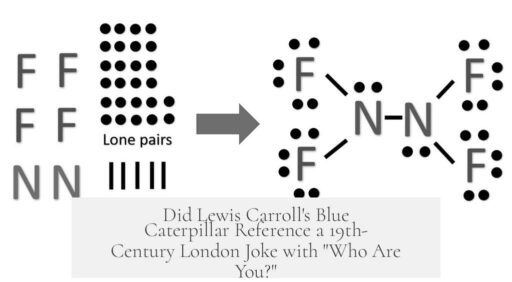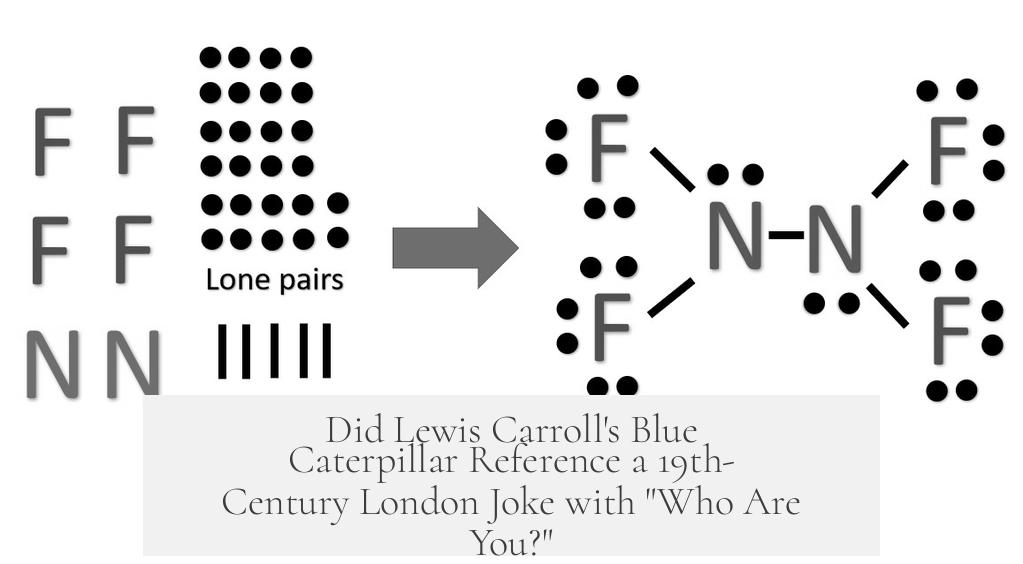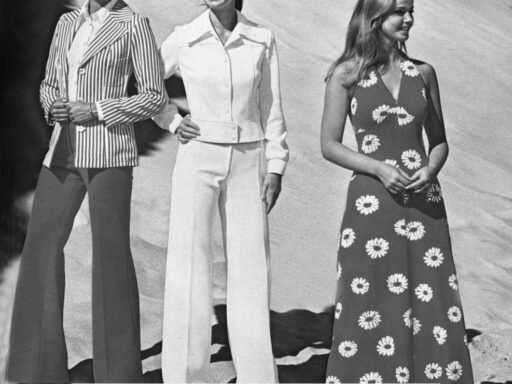In “Alice’s Adventures in Wonderland,” the Blue Caterpillar’s question, “Who are you?,” likely refers to a popular joke and phrase circulating in London around 1840-1841. Lewis Carroll seems to echo a well-known saying that had gained widespread attention, partly due to an incident involving a judge in a criminal court that helped keep the phrase alive in public memory.
The phrase “Who are you?” became a catchphrase in London during the early 1840s. Charles Mackay documents this in his 1841 work, Memoirs of Extraordinary Popular Delusions and the Madness of Crowds. The phrase swiftly spread through the city, especially among common social settings like alehouses and public gatherings. It was uttered quickly, emphasizing the first and last words sharply, turning the middle word nearly invisible to the ear.
Mackay illustrates how the phrase functioned like a social tool. It could challenge authority, deflect embarrassment, or spark laughter. For instance, newcomers to taverns were demanded to identify themselves with the question; those awkwardly failing to respond triggered raucous laughter. It slapped down presumption and jeeringly called out ignorance or insolence.
The phrase’s popularity peaked partly due to an episode in a leading criminal court, described vividly by Mackay. During a trial, a man’s defense rested on character witnesses. One unexpected voice in the gallery boldly defended the accused, saying he was the “honester feller never breathed.” The judge, maintaining calm, then asked, “Who are you?” This moment struck the public as cleverly witty. The courtroom’s laughter spread quickly outside to the populace. This particular judge gained popularity for his humor and seeming empathy, as his utterance of the phrase became associated with a just and relatable figure.
Mackay notes that after this event, “Who are you?” experienced a resurgence, remaining a favorite expression long after.
Regarding Lewis Carroll’s use in Alice’s Adventures in Wonderland, there is a good probability he references this phrase deliberately. Carroll owned Mackay’s book, making him aware of the phrase’s cultural significance. Scholars like John Clark suggest Carroll might even have personally encountered the phrase shouted during moments of public or social confrontation.
This background sheds light on why the Blue Caterpillar’s “Who are you?” stands out. The question functions as a prompt for identity and self-reflection, consistent with the original social use as a challenge. Within the surreal context of Wonderland, the phrase transcends mere small talk. It draws Alice—and through her, readers—into questions about self-knowledge and transformation.
The link between Carroll’s literary choice and the popular phrase adds a layer of richness to interpreting the Caterpillar’s question. Instead of a simple query, it mirrors social attitudes of Carroll’s time, where “Who are you?” served as an incisive, sometimes humorous demand for the personal truth of an individual. It reflects how language captures and sustains social moods and popular culture.
| Aspect | Details |
|---|---|
| Origin | Popular phrase in London circa 1840-1841 documented by Charles Mackay. |
| Usage | Quickly uttered, challenged authority, prompted laughter, embarrassment, or defiance. |
| Notable Incident | Judge used “Who are you?” during a trial, sparking courtroom laughter and public popularity. |
| Carroll Connection | Carroll owned Mackay’s book; possibly deliberate reference in Blue Caterpillar’s question. |
| Literary Function | Question highlights identity and self-awareness themes in Wonderland. |
By understanding the social history behind the phrase, readers gain insight into Carroll’s layered writing. The Caterpillar’s inquiry is more than a character’s casual question—it echoes a piece of 19th-century London’s conversational life and humor.
- The phrase “Who are you?” was a widespread London catchphrase by 1840.
- It served as a challenge and source of amusement in social and legal contexts.
- A judge’s courtroom use boosted the phrase’s popularity and public perception.
- Carroll’s known ownership of Mackay’s book suggests intentional referencing.
- The question in Wonderland weaves together social history and themes of identity.
Did Lewis Carroll’s Blue Caterpillar Channel a 19th-Century London Joke with “Who Are You?”
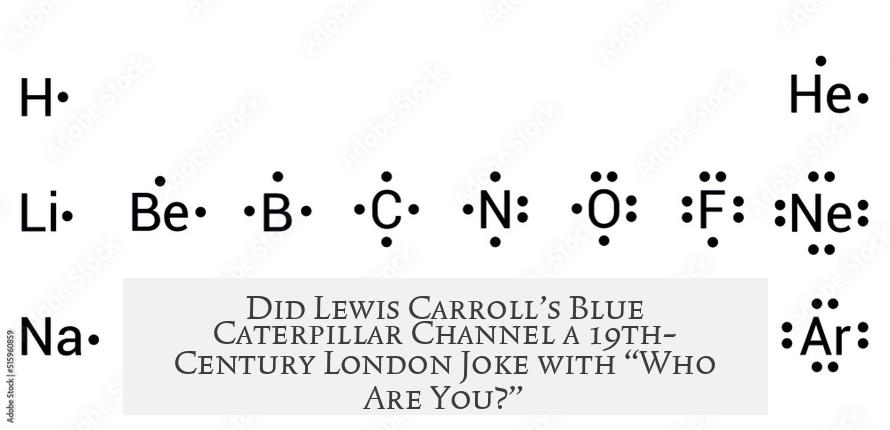
Here’s the short answer first: Yes, the Blue Caterpillar’s iconic question “Who are you?” in Alice’s Adventures in Wonderland likely nods to a popular London phrase buzzing around the 1840s—a witty, sharp-edged catchphrase that exploded in social circles, courtrooms, and alehouses. But it’s not just a casual catchphrase tossed in randomly. It’s a story about language, culture, and maybe even a cheeky wink at a judge who made this phrase legendary.
Ready for a dive into Victorian slang, courtroom drama, and literary history? Let’s unravel this mystery.
The Rise and Reign of “Who Are You?” in 1840s London
Imagine the streets of London circa 1840. The city vibrates with energy, gossip spreads like wildfire, and suddenly, everyone is saying a new phrase: “Who ‘r YOU?!” This wasn’t just any phrase; it was a running joke, a playful barb, a social check, rolled into three sharp, quick syllables.
Charles Mackay, a social observer, detailed this phenomenon in his 1841 book, Memoirs of Extraordinary Popular Delusions and the Madness of Crowds. According to Mackay, people started yelling this phrase everywhere—from dark alleys to bustling taverns. It had so much street cred that it echoed through every corner and became part of London’s urban soundtrack.
Why? Because “Who are you?” wasn’t a calm, sincere question. It was a quick, clipped sound, designed to poke fun. The first and last words snapped sharply, while the “are” barely lingered in the air—more of a breath than a word.
When “Who Are You?” Could Shut Down an Argument or Spark Laughter
Here’s where it gets fun. The phrase wasn’t just random chatter. It worked like a social tool, a subtle way to poke holes in someone’s confidence or expose ignorance. Newcomers to taverns (or “alehouse tap-rooms,” if you want to get fancy) would get hit with it right away. If they stumbled or didn’t have a clever comeback, the crowd exploded with laughter.
It was a quick test: Could you keep up? Could you claim your place? If not, prepare for good-natured roasting. Its versatility was the secret sauce—it could insult, amuse, or serve as a hedge against admitting you didn’t know something.
The Judge Who Brought “Who Are You?” to Courtroom Fame
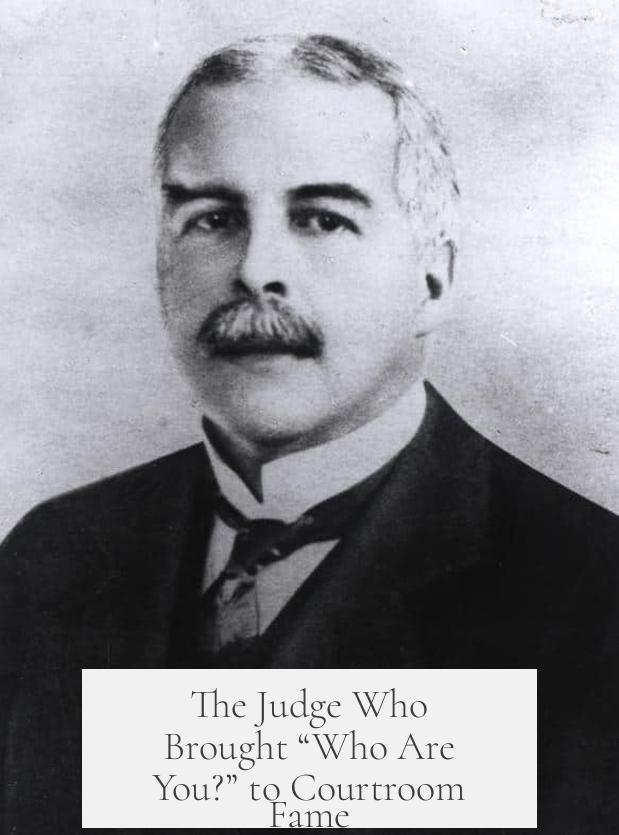
Now, here’s the kicker that really turbocharged the phrase’s popularity: a courtroom scene in the chief criminal court of London. A prisoner stood accused. His lawyer pleaded his good character, trying to soften the judge’s decision. Then, a gruff voice from the gallery pipes up: “I knows the prisoner at the bar, and a more honester feller never breathed.”
The judge looks right at the noisy spectator and, deadpan, asks, “Who are you?” The courtroom bursts into laughter. The moment was priceless—a high-status person, using a phrase popular among common folk, with perfect comedic timing.
That judge’s cool delivery transformed the phrase from street slang to courtroom legend. Prisoners sensed the judge wasn’t just a stern authority but someone who understood popular culture—someone who spoke their language and might go easy on them. No doubt, “Who are you?” shot back to the top of London’s favorite phrases list, all thanks to this judge’s wit.
Lewis Carroll’s Connection: A Wink to Popular Culture?
Lewis Carroll (real name Charles Dodgson) famously owned Mackay’s book describing the frenzy over popular phrases like “Who are you?” It’s safe to say he knew the phrase’s cultural weight.
Plus, as John Clark speculates, Carroll had probably been on the receiving end of “Who are you?” shouted in frustration or jest—perhaps in his youth or at public events. He wasn’t writing in a vacuum but drawing from real London life, filled with these witty bursts of slang.
When Carroll writes the Blue Caterpillar’s line—simple but loaded—he could be playfully echoing that era’s social joke. The Caterpillar’s question is not just a request for identity. It’s a subtle nod to a question used to unsettle, challenge, or entertain, just like it had done in London’s streets and courtrooms decades earlier.
Why Does This Matter?
Understanding this context says a lot about Carroll as a writer. He’s not just spinning fantasy. He’s embedding layers of social humor into his story. The question “Who are you?” no longer feels random or childish. It becomes a clever message about identity and perception, wrapped in the humorous style of his day.
Think about how many times people ask “Who are you?” today—not expecting a full bio but throwing a playful challenge or even a mild diss. Carroll captured that brilliant tension almost 200 years ago, making his work richer and scenes like the Caterpillar’s encounter resonate more deeply.
What Can We Learn from All This?

- Language evolves, but humor and social tools stay steady. What’s funny or sharp in 1840 can still work today, just in different words.
- Authors borrow from their worlds. Great fantasy writers, like Carroll, don’t create in isolation. They weave real-life culture and jokes into their stories to make them feel alive.
- Questions can have layers. “Who are you?” might seem straightforward, but its tone, timing, and origin can turn it into a social weapon or a moment of comedy.
Takeaway Tips for Readers and Writers
If you’re a reader, next time you hit a quirky phrase or odd question in a classic book, pause and research. You might uncover historical jokes or cultural insights that add flavor to your reading.
For writers, remember to sprinkle in real-world quirks. Even a short phrase can open worlds of meaning and engage your audience beyond the page.
Final Thoughts: The Blue Caterpillar and a London Catchphrase
So, Carroll’s Blue Caterpillar isn’t just a whimsical creature asking a simple question. It brings a sharp, socially loaded phrase from 1840s London to a fantasy world, connecting readers to a slice of history, humor, and social commentary in just three words.
Next time you hear “Who are you?” in a story, think about that judge, the alehouse brawlers, and a crowd ready to burst into laughter. It’s more than a question; it’s a story all on its own.
